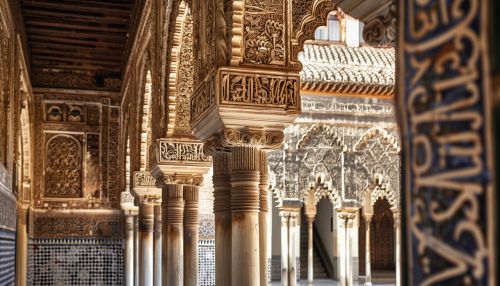Historic Preservation
Introduction
Historic preservation, also known as heritage conservation in some countries, is a professional endeavor that seeks to preserve, conserve, and protect buildings, objects, landscapes, or other artifacts of historical significance. This term refers to the practice of preserving structures which are of importance to the cultural heritage of any given nation or location.


History
The history of historic preservation is as old as humanity itself. From the earliest civilizations, there has been an understanding of the need to preserve structures and artifacts that hold cultural or historical significance. In ancient Mesopotamia, for instance, the Code of Hammurabi, one of the earliest known legal codes, included provisions for protecting certain structures.
In the modern era, the concept of historic preservation has evolved significantly. The 19th century saw the birth of the historic preservation movement in Europe, particularly in countries like France and the United Kingdom, where the Industrial Revolution threatened many historic sites and structures. This led to the establishment of preservation societies and legislation to protect historic buildings and sites.
In the United States, the historic preservation movement gained momentum in the late 19th and early 20th centuries, with the establishment of organizations like the Mount Vernon Ladies' Association and the National Trust for Historic Preservation. The passage of the National Historic Preservation Act in 1966 further solidified the importance of historic preservation in American society.
Principles and Practices
Historic preservation operates on several key principles. These include the preservation of the original material, respect for the original design and intent of the creator, and the use of reversible interventions. These principles guide the practices of historic preservation, which can include restoration, rehabilitation, reconstruction, and preservation.
Restoration refers to the process of returning a building or site to its original condition, as accurately as possible. This often involves extensive research to understand the original design and materials used, and may require the use of traditional building techniques.
Rehabilitation involves making changes to a historic property to make it functional for contemporary use, while still preserving its historic character. This can include adding modern amenities, such as plumbing and electricity, or making changes to meet current building codes.
Reconstruction is the process of recreating a non-surviving site or structure in a new location. This is often done when the original site or structure has been destroyed or significantly altered.
Preservation, in the context of historic preservation, refers to the act of maintaining a historic site or structure in its current condition, to prevent further deterioration or damage.
Challenges and Controversies
Historic preservation is not without its challenges and controversies. One of the main challenges is the cost of preservation. Restoring and maintaining historic buildings and sites can be expensive, and funding is often limited. This has led to debates about the value of preservation and whether it is worth the cost.
Another challenge is the issue of authenticity. In the process of restoration or rehabilitation, decisions must be made about what period of the building's history to preserve. This can lead to debates about what is "authentic" and how to best represent the history of the site or structure.
There are also controversies around the issue of gentrification. In some cases, the process of historic preservation can lead to increased property values, which can push out lower-income residents and change the character of neighborhoods.
Impact and Benefits
Despite the challenges, historic preservation has many benefits. It can contribute to the economic vitality of communities, through tourism and job creation. It can also have environmental benefits, as the preservation and reuse of historic buildings can be more sustainable than new construction.
Historic preservation also has cultural and educational benefits. It helps to preserve the cultural heritage of communities and provides a tangible connection to the past. It can also be a tool for education, providing opportunities for people to learn about history and architecture.
